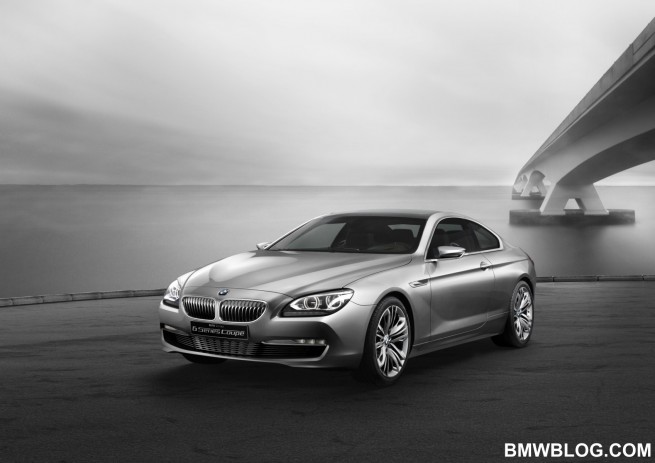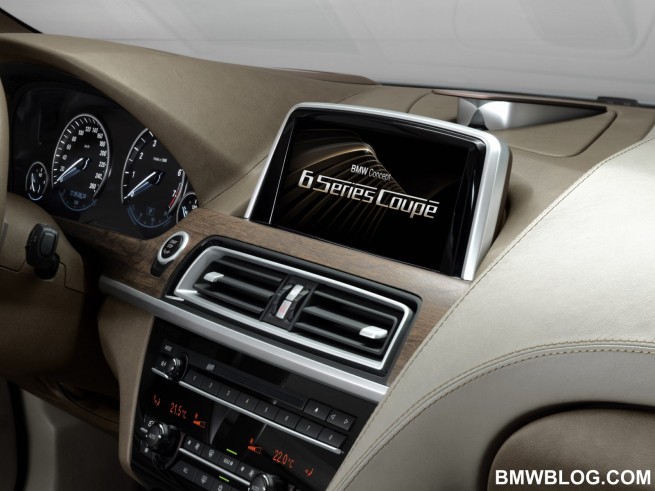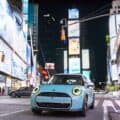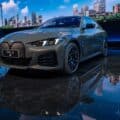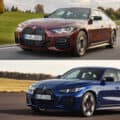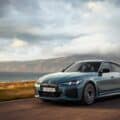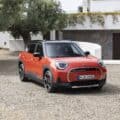At the recent Paris Motor Show, BMW sat down with Adrian Van Hooydonk, Senior Vice President BMW Group. Among topics like the BMW 6 Series Coupe Concept and the new X3 SAV, the discussion also steered towards the new BMW design language and future plans, premium mobility, Apple design and the hipster MINI Scooters.
Prior to be named Head of BMW Design, Van Hooydonk designed or influenced the design of BMW 6 and 7 Series lines, as well the Z9 Concept Car, the BMW Concept CS and the M1 Hommage Study.
Judging by his words and emotions during the interview, the future of BMW design team is in good hands, and the confidence inspired by Van Hooydonk will transpose into upcoming designs.
BMWBLOG: What will BMW do next for styling? We believe the new F10 5 series adheres to a more classic, conservative BMW design theme, as opposed to its more radical predecessor, the E60. Will we see more radical design language in the future, or will BMW continue down this more conservative styling path?
Adrian Van Hooydonk: If you look at our history, it has always stood for lightweight, very well proportioned, dynamic and elegant cars. I think that’s what you see now, in this new generation. Ten years ago BMW made a big change and it was only to widen the design vocabulary. Once we had done that, we felt that we were okay again. The generation of cars we’re doing now, the 7, the 5 and the new 6; we believe they are a perfect balance between dynamics and elegance.
The lines are still sharp and the way we are doing it, it’s not softer or more conservative; when you look at our design from 20 or 30 meters away, it’s not complicated, you only see two or three lines in the new 6 Series for example, but when you walk up close and you walk around the car, you see how carefully, how complex the surfaces are crafted because is really is very complicated. I think in this generation you see how much we’ve learned from the past. I think there’s no car company I know that is able to do this type of complex surfacing, but when you do this surfacing and make it look easy, that means you’ve mastered the design language, and that’s our goal.
Of course, the cars should be beautiful.
BMWBLOG: The new 6 Series coupe seems to have a very lean, muscular design over the existing 6 Series which you’ve designed. Was there a specific design point that you chose to address in the new car?
Adrian Van Hooydonk: The 6 Series is very successful. The 6 Series that I ended up designing, that was sort of a relaunch of the 6, it had been away for about ten years and we had the 8 Series in between. The 6er that I designed was and is very successful in the market for eight years and I think when you look at the design today, it doesn’t look like it’s eight years old, if I may say so myself.
Market success proves that.
But inevitably the time comes around when you must do the next generation and when the time came to sit around and think about what we wanted to do for the new car we said well, we want to develop it in a way to make it more sporty and more elegant. We made it more elegant by improving the proportions. The wheelbase got longer, the car got a little wider, the car got a little lower – that cannot be wrong for a car, for a BMW. To make it more sporty, you can immediately see it when you look at the front of the car, the headlamps, the lower bumper, the kidneys are even lower and wider – all of these things make the car more sporty.
At the rear, the car looks a lot wider. It is wider, but for instance through the design of the tail lamps which are very wide and very flat, we make the car look twice as wide. So all of these things we talked about in the beginning, and that is why the car looks like that. Not because we were unhappy with the previous one, we found a lot of happy customers with the previous car, but if you can make a car more sporty and more elegant and it is the top of the line coupe for BMW – that’s a good direction to take.
BMWBLOG: The new 6 Series looks to embody all of the design cues from BMW’s latest models. With so much competition in this price range, do you think the most important aspect of design is on the interior or exterior of the car?
Adrian Van Hooydonk: In my experience, the interior is what keeps the customer buying your product, the exterior is what gets them interested at first because the exterior is the first thing you see. If they have already driven a 6 Series or another BMW and they have ‘lived’ in it for I don’t know how many years, that is what decides whether they will buy your product again.
Both are extremely important – we talked about what we’ve done to the exterior, making it more sporty and more elegant – we did the same thing on the interior. The interior is more sporty because there is more driver orientation. If you look at the dashboard, you will see a line starting at the top of the dashboard coming all the way to the center console, so the whole interior is very asymmetrical, even more than in the 5.
Driver orientation is very important for any BMW, because BMWs are made for people that like to drive, but of course in the 6 Series being the top of the line sports car, it’s even more important. Then there is very modern detailing, very interesting things. If you look at the door panels and the flow of the line in the door panel coming from the dashboard, I think that is extremely elegant, very subtle. And the way we’ve dealt with the computer screen uses very modern detail.
Up until now in our cars we have integrated the computer screen into the dashboard, but on the 6 series it looks like a flat screen, and it is. It’s standing free of the dashboard. There are two reasons: first of all we were able to make the dashboard much lower and you feel you can look out of the car much better, and of course everyone has flat screens at home right now, it is the way of the future. Cell phones keep getting thinner, so that I believe is a very nice and modern detail to the interior.
BMWBLOG: While we’re on the interior design topic, we’ll add one more question: The rumor is that you’re a big Apple fan, a fan of their industrial design and their simplicity and elegance – is there anything that we see in the new 6 Series’ interior that is following a similar path?
Adrian Van Hooydonk: Let me answer you this way, I have a lot of respect for the Apple design team and what they’ve done over the last couple of years, I think it’s fantastic. I think the success of that company is largely due to them, the designers.
Of course, the products are clever too; I think it proves that if you have extremely good functionality and a highly emotional design you can be very successful, and that is what we are doing here at BMW as well. All are products need to work very well, need to be safe, need to handle well, faster than a lot of other cars and use less fuel than a lot of other cars but ultimately it is about emotion and that’s what draws people in.
I met Jonathan Ivy recently (our note: Apple Mobile Head of Design) , he’s a cool guy and we got along very well. I know that Apple’s design team, and I met them as well, are interested in cars. As designers we get along very well, but I cannot just take lines from their products and put it on a car. The only thing maybe that you could say is that we’ve observed for a while that in consumer electronics things are getting slimmer with high gloss surfaces.
In the 7 Series and now in the 6 Series as well, on the centre stick we have what we call black panel and you probably know what it is because we’ve talked about it. In older cars all of this was black plastic which we didn’t like so much, so now we designed the whole center stick like it is a display and there are some buttons coming through.
You could say that it’s an inspiration that comes from high-end audio or from high-end electronic equipment, the flat screen in the 6 Series – this is another thing where you can say we were inspired by what’s going on in high-end electronics. The difference between cars and cell phones of course is that cars move and have power, so we don’t just want to make beautiful objects that work very well, we want to make our cars look like they are moving, and Jonathan doesn’t have to do that.
BMWBLOG: The new 5 and 6 Series were introduced to the consumers, what is next for BMW?
Adrian Van Hooydonk: Many things, as you can imagine, but the 6 Series that we’re showing here is a preview, it’s a concept but it is very close to what it will be like, so next for us is the launch of the production car, which is actually for BMW quite a significant event because it’s a top of the line car.
Then, next year is going to be very interesting as well, there are a lot of new car launches, but we will get into that once we’re there because here in Paris, we already have lots of new stuff on display. We have the new X3 which is an important car for the brand and we have the new 6 Series preview.
BMWBLOG: Where does the Gran Coupe fit into the lineup and what was the decision to build the Gran Coupe along with the other 6 Series models?
Adrian Van Hooydonk: BMW has always stood for very elegant and sporty four door cars, limousines. We felt that that terrain is changing quickly and there is a lot of talk about four-dour coupes and we felt that that would be a natural playground for BMW, so that’s how the idea came about. I think now you begin to see how we’ll be able to do it. We’re thinking of a product family of the BMW lineup, the 6 Series coupe, convertible and one day a four-door type of car. The name is not yet decided but it will be in that kind of territory.
BMWBLOG: The creases that are showing up on the hoods of recent BMW cars, are they there for technical reasons or are do they purely exist only for aesthetics?
Adrian Van Hooydonk: It is both emotional and technical. We see that those lines are moving back from the BMW logo and typically we show these lines moving back to the A-pillar, and it shows how the air would move along the nose of the car.
Sometimes we have a few more lines like on the 5 Series or like on the Z4, but all of this you could also trace back to our history – the 2002 had similar lines. It adds precision and it adds direction. On the 5 Series for example, when you sit behind the steering wheel as a driver, you see that it helps you focus on the road. If you see it from the outside it is an indication of how the air would flow.
Now it is also clever in a technical way because the section of this, if you look carefully at what happens on the bonnet, often this will be the highest point of the bonnet, and underneath this point is the shock tower, if you open the bonnet – and why is this so important? It’s important because of pedestrian safety. Now, with pedestrian safety, we have the engine underneath here and you always need to have a certain amount of space between the outside of the hood and the hard pieces below. The shock tower is a hard piece and the engine as well, so we really make sure that the section where you have the engine and shock towers typically have the highest point on the bonnet.
So as designers, we really have to be very careful and deliberate about where we put the lines, so our designers have really become very clever in dealing with these new regulations and still manage to make it look like a BMW.
(Our Note: Van Hooydonk sketched on a piece of paper the design reasons behind the hood creases)
BMWBLOG: Let’s talk about the MINI Electric Scooter concepts.
Adrian Van Hooydonk: It is part of the BMW Group wanting to be the most successful provider of premium mobility solutions. We already make two wheeled vehicles, as we have been doing this for a long long time, motorcycles at the moment are more or less leisure vehicles, it’s something that you use on the weekends for fun, not so much for everyday transportation unless you’re really a fan.
We believe that when city traffic becomes denser and denser like here in the city of Paris, as you see as an example, two-wheeled transportation will probably get a second look. People will reevaluate how they travel in the city. That’s what we expect and then in an urban environment, making electric vehicles also makes a lot of sense because many cities are putting regulation in place that will prevent you from entering the city if your car or vehicle emits more than a certain limit.
Of course electric driving offers zero emissions. We wouldn’t be BMW Group if the products that we think of are not fun and highly emotional, and MINI is exactly that. MINI should be the brand that allows you to arrive at the inner city or wherever you want to get, because sometimes on four wheels, it is hard to get downtown or it’s hard to find a parking spot, but on two-wheels it is that much easier. Those are all the thoughts that I believe are logical that led to this project.
We have previewed it in London last week and the response was very favorable. Now we showing it again at the Paris Motor Show and then we want to gather feedback and see where we go from there. It’s a very exciting project because MINI has never done anything on two-wheels nor has BMW done scooters, so it’s really brand new territory and I’m very excited also.
BMWBLOG: Tell us more about BMW’s future in electric vehicles and how will this fit with the “Ultimate Driving Machine” brand.
Adrian Van Hooydonk: It’s going to be fun to drive. Don’t forget that electric cars, if we talk about electric cars – they have phenomenal acceleration, it’s not gradual, it is instant all the way.
So whatever we’re going to do, and we are going to do an electric vehicle for 2013, the Megacity vehicle, it will be a fun driving experience. We’re going to make sure of that. Electric mobility is not the only thing we will be doing in the future, we expect by the year 2020 15% or so, 25% at most will be electric, so that still means that the majority of vehicles will have other means of propulsion, and we’re pretty good at that too, so we’re not going to forget that. All we’re doing is making sure that our customers will have a choice, that they will never be prevented from going anywhere they want to go.
BMWBLOG: What will the Megacity vehicle bring to the market different from the competitors?
Adrian Van Hooydonk: I think the main differentiator will be that it will be premium and it will be desirable. Yes, there are already electric vehicles, there are sustainable vehicles, most of them are probably being bought for rational reasons. People begin to think, I should switch, I should be driving that.
Do they absolutely love them? I don’t think so.
This is what we want to change. We want to offer something people see and say, “I want that car” and the fact that it’s zero emissions will be an added bonus. We want them to buy it because they love it, and if we manage that, then it will also lead to a bigger change. I think that is really a market opportunity. Many car companies see the changes that are going on in the world as a threat – we never do that, we see it as opportunity.
The market niche is emotion in combination with sustainability. The first step to that was the show car that we had in Frankfurt last year, the Vision Efficient Dynamics. That’s our idea of what a super sports car of the future could look like. We got very favorable reactions to that, many people even said, “I don’t care what drivetrain it has, I want that car” and that means that this is possible.
BMWBLOG: How exciting is it for a designer to build a sub-brand from the bottom up, pretty much from scratch?
Adrian Van Hooydonk: It’s true, the design team and I realized that an opportunity like that, probably only comes along once in a designer’s life, this doesn’t happen very often. The big changes in drivetrain that are going to happen will allow us a designers more freedom because there is going to be a new set of rules. There is no industry standard yet, so there is a lot of room for experimentation and creation.
So right now, as designers we’re living in very very exciting times.
BMWBLOG: Three big words that we keep hearing from BMW lately: lightweight, sustainability, and mobility. What changes do you see in accomplishing these three things from a designer’s prospective?
Adrian Van Hooydonk: Maybe the best example to talk about it would be the Vision Concept car. It is a hybrid, plug-in hybrid, so it has batteries and electric motors. Because it has batteries the car has to be constructed in a different way. Batteries are still heavier today than fuel, so the whole car has to become lightweight. We need to use materials like carbon fiber and the aerodynamics need to become drastically better. That can be done, we’ve shown it in this concept car.
This is the first concept car we’ve put in the wind tunnel to test and the drag co-efficient is 0.22, very very low. The sharp edges that you see on this car have an aerodynamic function.
As designers we’ve studied the aerodynamics quite hard and we’ve talked to the engineers a lot about carbon fiber and how we can make things lighter and then in the design team we though about how we can make it look lighter. The answer that we came up with is that the body panels of that car almost seem to flow. There are large glass areas in combination with the floating body panels which makes the car look light.
Now of course, we’re working on and integrating that into the BMW form language. The way we do it is first we derive inspiration from the technology, then we build a vision, a concept car where we are free, then we translate that back into the form language.
BMWBLOG: How do you sculpt carbon fiber? Are there any design limitations for styling?
Adrian Van Hooydonk: No, we can do actually a lot of shapes in carbon fiber, you can form it very easily. In that sense there is no restraint – the only thing that we sometimes find is that you need bigger cross sections here and there to get the same stiffness, but that is more an engineering topic than a design topic.
In terms of sculpture, we are very free with carbon fiber.
BMWBLOG: And the final question. You’ve told in our last interview about your interest in architecture. Are there any other areas of design that you’re interested in? Perhaps furniture or fashion design?
Adrian Van Hooydonk: Every designer needs to find inspiration and I find inspiration in BMW’s history, as well as the history of MINI and Rolls-Royce. Our job of course is to translate our heritage into the future and nobody really knows what is going to happen in the future, but I think that creative people have a very fine antenna for what is going to happen and I’m in contact with people from the fashion world, fashion designers and industrial designers, I go to the Milan furniture fair every year where all the product designers of the world come together and show their latest creations. I know a lot of them personally and I’m lucky to also get in touch with world famous artists like Jeff Koons.
When BMW does an art car, I get to meet these artists and they too think about the future constantly, so we exchange views about that. I can never get something from them that I can apply directly onto a car, but I get from them inspiration and I get feedback about how they think the future is going to be, and they get the same thing from me by the way, for their work, and that is actually very helpful.
See also our previous interview from Detroit Auto Show.
[Leading Photo by Dustin Kirk]



